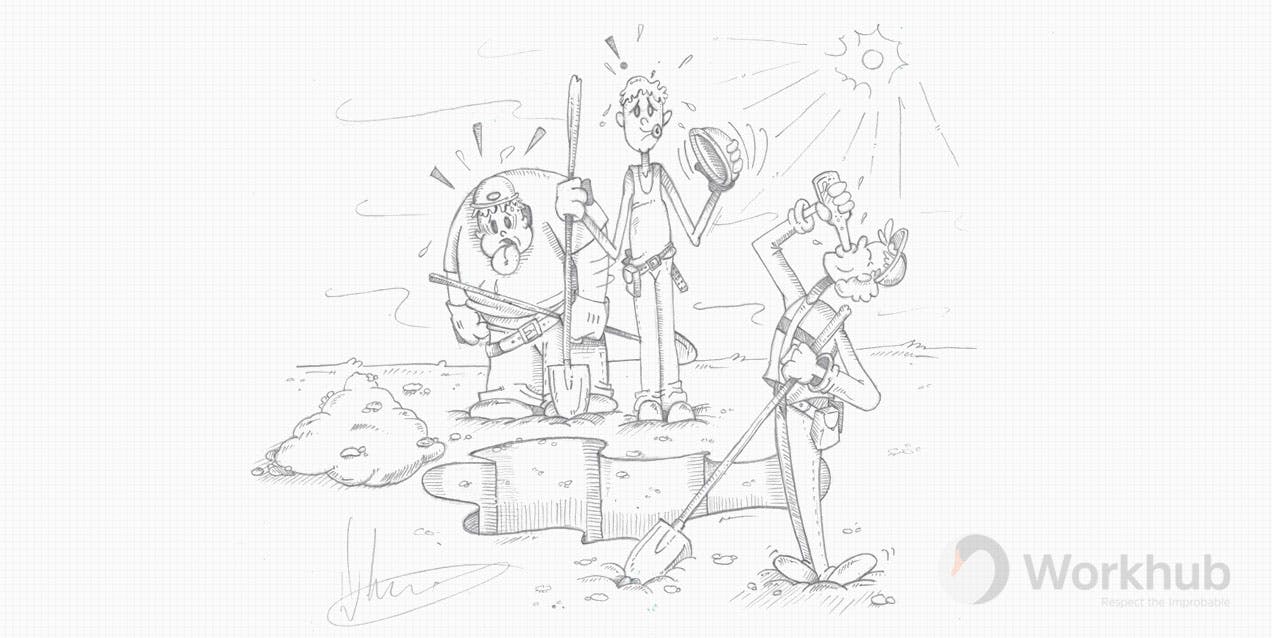
As the warmer months begin and summer is just around the corner in many parts of the world, we are once again reminded of the importance of working safely in the heat. Our bodies have various processes to ensure that we stay within a normal temperature range of about 37 degrees Celsius or 98.6 degrees Fahrenheit. However, when we are exposed to extreme heat for a prolonged period, our bodies can reach the point where they can no longer keep up. This can be further exacerbated when we are also undergoing strenuous activities like exercise or outdoor work. Heat illness can occur in both indoor and outdoor environments, especially when a person is new to working in a hot environment or has taken extended time away from that environment. The four types of heat illness are listed below.
Heat cramps
Heat cramps occur in our muscles and most frequently in the calves or legs but sometimes in the stomach. They are generally caused by low levels of electrolytes in the body. Therefore, when they occur it is important to cease any activity, retreat into the shade or a cool place and hydrate with a cold beverage (ideally water or an electrolyte drink).
Heat rash
Heat rash (or miliaria profunda) most commonly occurs due to excessive sweating in hot and humid weather. It is caused when sweat glands become blocked and therefore are unable to produce enough sweat to cool the body. It usually occurs on clothed parts of the body, including the back, armpits, abdomen, neck, chest and groin. Symptoms include itching or prickling, small blisters or large enflamed bumps. If heat rash occurs, move the worker to a cool place and avoid humidity if possible. It is important that the worker does not scratch the skin in order to avoid infection. Ensure that the worker is wearing loose fitting clothes to avoid trapping heat and moisture. Powder can be applied to the rash for comfort. See a doctor if symptoms persist.
Heat exhaustion
Heat exhaustion generally arises when a person has been working strenuously for a long period of time outdoors. Signs and symptoms of heat exhaustion include excessive sweating, pale complexion, thirst, weakness, fatigue, dizziness, headache, nausea or vomiting and fainting. If a person starts to experience any of these symptoms it is important that they drink cool beverages, rest, and ensure that they are wearing thin, light-colored clothing.
Heat stroke
Heat stroke is the most severe of heat illnesses. It can lead to hospitalization and potentially be life threatening, so it is important to recognize the signs. Heat stroke usually occurs when the body overheats and becomes incapable of regulating its temperature as it normally would. As the body is no longer able to sweat adequately, a person’s body temperature can rise to over 37.7 degrees Celsius or 100 degrees Fahrenheit within only a short amount of time. Signs and symptoms include hot and dry skin with no sweating, confusion, dizziness, nausea, an upset stomach, rapid breathing or even convulsions.
If left untreated, heat stroke can be serious and potentially damage the heart, kidneys, and muscles, so it is essential to take all necessary precautions and seek treatment immediately when you recognize the signs. If a person is suffering from heat stroke, do not give them fluids. Instead, if possible, use a hose to spray them or place them in a cool (but not cold) bath or shower. You can also apply a sponge or cloth with cold water to their body or fan them. Ensure to monitor the person’s breathing until help arrives. In extreme cases CPR or emergency medical treatment may be necessary.
Tips for working in hot weather:
- Avoid dehydration. Ensure workers have easy access to water. Drink plenty of water and other fluids to stay hydrated. Keep in mind that alcohol and caffeinated beverages like coffee, caffeinated tea, soft drinks and energy drinks contribute to dehydration and should be avoided.
- Wear appropriate clothing. Thin, loose-fitting clothing is best in the heat. Have workers wear a brimmed hat or hard hat. Light colored materials help to reflect the sun’s heat, rather than absorb it.
- Use sunblock. Ensure that workers apply sunscreen. A broad-spectrum sunscreen with an SPF of 30 and above is recommended.
- Take breaks. Make sure that employees take breaks and work at a slower pace, if necessary, especially when they are new to working in the heat or have taken an extended period away from it. Have workers retreat into an air-conditioned area, shade or tent when available. Avoid direct sunlight if possible.
- Prepare for work delays or changes in schedule. Strenuous outdoor work should be decreased or postponed to a cooler time of day, when the sun is lower in the sky, outside of midday hours. If possible, rotate work schedules or hire more workers to finish the job faster. Bulletins are a great way of communicating with workers about any schedule changes or other important information during extreme weather conditions.
- Plan: Proper policies and procedures are essential. Ensure that your company has specific guidelines and instructions in place regarding extreme heat conditions.
- Know the signs: Keep an eye out for workers who might be at greater risk of heat illness. Heat illness is more likely to affect children and the elderly.
Heat illness can be serious and even deadly, so it is important to train workers to recognize the signs so that they can be prepared and look out for one another. Planning ahead and taking the necessary precautions can greatly reduce the risk of heat illness.
Workhub provides a complete health and safety compliance software that allows easy management of training, procedures, policies, inspections, and more, centralized in one easy-to-use hub.
Still have questions?
Let our knowledgeable sales team give you a full product tour and answer any specific questions you may have.
Workhub Internal